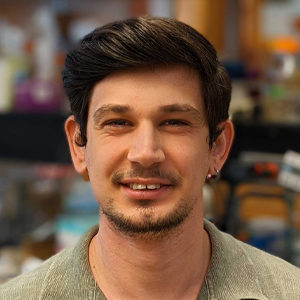Mutant RNA exosome protein linked to neurodevelopmental defects
Neurodevelopmental defects impair activities of the brain, such as cognition and memory. Researchers still have much to learn about the mechanisms behind these conditions, but recent findings helped define the role played by a specific genetic mutation.
A study by Milo Fasken and colleagues, published in the Journal of Biological Chemistry, describes a genetic variant in the RNA exosome component gene, EXOSC4, associated with neurodevelopmental disease phenotypes, such as prenatal growth restriction and global developmental delay. The researchers report that this mutation impairs RNA exosome function.

The RNA exosome is a ribonuclease complex that maintains normal cellular activities by processing ribosomal RNA, degrading aberrant RNA, and regulating messenger RNA production and degradation. Thus, any mutations in exosome genes may disrupt cellular homeostasis.
Fasken, an associate scientist in Anita Corbett’s lab in the biology department at Emory University, was first author on the JBC paper.
“Professor Corbett and I have been studying RNA exosome gene variants identified in disease for a number of years now,” he said. “We are characterizing the functional defects in the RNA exosome associated with each EXOSC variant using several models. Our work provides insights into how EXOSC variants impair the RNA exosome complex and sheds light on possible mechanisms of disease.”
The RNA exosome complex comprises 10 subunits that form a ringlike structure and work cooperatively to perform the exosome’s functions. EXOSC4 is one of the structural subunits. The newly identified missense mutation in EXOSC4 causes a single amino acid substitution in the EXOSC4 protein and this EXOSC4 variant can disrupt interactions with other RNA exosome subunits and impair function.
The team found the missense EXOSC4 mutation in two siblings with neurodevelopmental defects. Then, they compared the siblings’ disease characteristics with those linked to several other EXOSC mutations that abolish exosome activity and cause neurodevelopmental defects. They concluded that their phenotypes overlapped, indicating that the mutation in EXOSC4 causes an exosomopathy.
The researchers then used a budding yeast model to explore consequences of the EXOSC4 mutation on cellular function. The ortholog of EXOSC4 is Rrp41 in budding yeast; therefore, they genetically engineered a budding yeast strain to contain the corresponding missense mutation in the RRP41 gene. In addition, the researchers overexpressed the mutant protein using a high copy number plasmid.
“We have found that increasing the level of the yeast Rrp41 variant … in budding yeast restores some RNA exosome function but not to the same extent as the wild-type protein,” Fasken said. “This result suggests that mutation itself also has functional consequences. Also, we have shown that yeast cells expressing the mutant protein variant exhibit translational defects with a reduction of ribosomes.”
These results show that the EXOSC4 variant not only causes functional defects but also impairs interactions with other exosome subunits, therefore suggesting that the EXOSC4 variant could impair exosome complex assembly.
In future studies, the researchers will investigate how various types of mutations in the EXOSC genes affect the RNA exosome complex and translate to neurodevelopmental defects. Information from this study could inform the development of gene therapy applications for exosomopathies.
Enjoy reading ASBMB Today?
Become a member to receive the print edition four times a year and the digital edition monthly.
Learn moreGet the latest from ASBMB Today
Enter your email address, and we’ll send you a weekly email with recent articles, interviews and more.
Latest in Science
Science highlights or most popular articles

Mapping proteins, one side chain at a time
Roland Dunbrack Jr. will receive the ASBMB DeLano Award for Computational Biosciences at the ASBMB Annual Meeting, March 7–10, just outside of Washington, D.C.

Exploring the link between lipids and longevity
Meng Wang will present her work on metabolism and aging at the ASBMB Annual Meeting, March 7-10, just outside of Washington, D.C.

Defining a ‘crucial gatekeeper’ of lipid metabolism
George Carman receives the Herbert Tabor Research Award at the ASBMB Annual Meeting, March 7–10, just outside of Washington, D.C.

The science of staying strong
Muscles power every movement, but they also tell the story of aging itself. Scientists are uncovering how strength fades, why some species resist it and what lifestyle and molecular clues could help preserve muscle health for life.

Bacteriophage protein could make queso fresco safer
Researchers characterized the structure and function of PlyP100, a bacteriophage protein that shows promise as a food-safe antimicrobial for preventing Listeria monocytogenes growth in fresh cheeses.

Building the blueprint to block HIV
Wesley Sundquist will present his work on the HIV capsid and revolutionary drug, Lenacapavir, at the ASBMB Annual Meeting, March 7–10, in Maryland.

